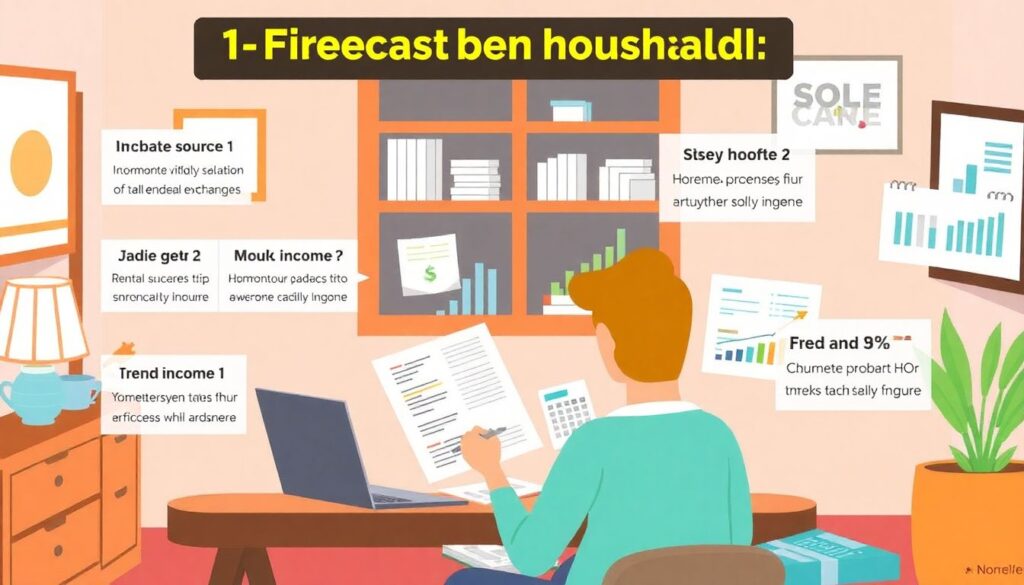Essential Tools for Household Financial Forecasting
Before diving into financial forecasting, it’s important to gather the right tools. You don’t need a finance degree or expensive software — just a few reliable resources. Most households start with a spreadsheet program like Microsoft Excel or Google Sheets. These are perfect for tracking income, expenses, and projecting future cash flow. If you prefer ready-made solutions, apps like YNAB (You Need A Budget), Mint, or EveryDollar offer intuitive interfaces and automation.
Experts recommend using a budgeting app in tandem with a calendar. This helps align bills, income, and savings goals with real-life events. For families with complex finances, financial planning software like Quicken or Personal Capital can provide deeper insights and investment tracking. The goal is to create a system you can easily stick to, not one that overwhelms you.
Step-by-Step Process to Forecast Your Finances

Forecasting your household finances isn’t just about estimating expenses — it’s about anticipating changes and planning accordingly. Here’s a simple 5-step process to help you get started:
- Review your income: Start by listing all sources of income — salaries, side gigs, rental income, child benefits, etc. Be realistic and use average monthly figures.
- Track your expenses: Analyze your spending over the last 3–6 months. Categorize into essentials (rent, groceries, utilities) and non-essentials (dining out, subscriptions).
- Set financial goals: Forecasting works best when tied to goals — saving for a vacation, building an emergency fund, or paying off debt.
- Create monthly projections: Use your data to forecast income and expenses for the next 6–12 months. Factor in seasonal changes like holiday spending or school fees.
- Review and adjust: Life changes — your forecast should too. Revisit your plan monthly to update figures and tweak as needed.
Let’s say your family is expecting a new baby. This major life event will affect hospital bills, daily expenses, and possibly reduce income. A forecast helps you plan ahead for these changes instead of reacting under pressure.
Troubleshooting Common Forecasting Issues

Even the best forecasts can run into roadblocks. One common issue is underestimating variable expenses. For example, energy bills can spike in winter or summer — if you don’t account for this, your forecast might fall short. Experts suggest adding a 10–15% buffer to variable expenses to stay on the safe side.
Another pitfall is ignoring irregular income. If you’re self-employed or earn commissions, use the average of your lowest-earning months as your base. This conservative approach prevents overestimating and helps you build a cushion.
Also, avoid “set-it-and-forget-it” forecasting. A financial plan is a living document. If your car breaks down or you get a pay raise, your forecast should reflect that. Set a recurring reminder — maybe the first Sunday of each month — to review your numbers.
Experts also recommend involving the whole family in the process. When everyone understands the plan, it’s easier to stick to it. Kids can even help track grocery spending or save toward a shared goal like a family trip.
Expert Tips for Smarter Forecasting
Financial advisors agree on one thing: simplicity wins. Start small. Don’t try to forecast 5 years ahead if you’ve never tracked a single month. Begin with a 3-month outlook, then gradually expand.
Another expert tip? Use past behavior to predict future spending. If you’ve spent $300 monthly on groceries for the last six months, don’t suddenly budget $200 unless you have a concrete plan to cut costs.
Lastly, always forecast with a purpose. Are you trying to get out of debt? Build a down payment for a home? Knowing your “why” keeps you motivated and focused. As financial planner Laura Adams puts it, “A forecast without a goal is just a guess.” So build your forecast around your real-life ambitions and adjust it as those ambitions evolve.

